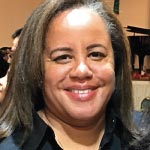By Mike Hebel
POA Welfare Officer
SOCIAL SECURITY SOLVENCY
Q. Mike, I retired almost six years ago from the SFPD and now have just applied for my monthly social security benefit. While I know that it will be small especially compared to my police pension, it will allow me to provide some financial assistance to help educate my grandchildren. Can I really count on receiving those monthly checks?
A. Yes you can. Despite gloomy predictions that you may be reading about – especially pronouncements from some political candidates, the Social Security System will remain on very firm footing for at least the next 25 years. The current surplus of collections over payments will keep growing until around 2022. Then the surplus will slowly shrink as more baby boomers retire and start, like you, receiving monthly benefits (which, by the way, are called “old age benefits”). The bad news is that, without changes by Congress, the surplus in the trust fund will disappear in about 2035. But the trust fund will continue to have monies, but only enough to continue meeting 75% of obligations for another half-century, through 2085.
But Congress will act to insure that baby boomers receive their promised benefits – or else they will be voted out of office. Since 1937, Congress has mandated 63 changes to the Social Security program – raising the tax rate 20 times and the maximum wage subject to the tax 43 times. Congressional changes are likely to come in 2013 or 2015 – after the next presidential election and in an odd-numbered year when members of Congress are not on the ballot. The only change that may affect you pertains to the manner in which the annual cost of living benefit is calculated; a less advantageous method may be put in place. PS: the normal retirement age for your grandchildren to begin to receive their monthly benefit from the Social Security System will certainly be higher than for you – probably age 70.
RETIREMENT SYSTEM TRUST FUND SOLVENCY
Q. Mike, you recently wrote that our Retirement System is well funded and solidly capable of continuing to meet its obligation to provide monthly retirement payments to the City’s retirees. But how does its funding and investment results compare to other large pension funds?
A. Our Retirement System remains about 90% funded. See the accompanying chart setting forth the trust fund’s historical funded ratio. It has made a remarkable recovery from its low of February 2009 (assets of $11.1 billion) to its current value (June 30, 2011) of $15.4 billion. My data shows that it is currently the 2nd best funded public pension plan in the US.
The nation’s largest public pension fund, the California Public Employees’ Retirement System, on which 1.6 million members depend, is currently at about a 70% funding ratio – up from 60% to which it had fallen during the “Great Recession” of 2007-2009.
Our Retirement System’s trust fund generated a 21.8 % portfolio return in the fiscal year ending June 30, 2011; having grown by 12.6% in the previous fiscal year ending June 30, 2010.
Our Retirement System’s trust fund returns are measured and compared to the 71 public funds valued over $1 billion. This comparison is conducted by the Trust Universe Comparison Service (TUCS). As of June 30, 2011, our trust fund ranked above the median return for the current quarter, one-year (21.5%) and ten-year time periods. It was, however, below the median for the three-year (2.5% vs. the median of 4.3%) and five-year (4.5% vs. the median of 5.1%) time periods.
Since continuing favorable returns will be so important going forward (Propositions C & D, November 2011 ballot) with respect to city employee contribution rates and the availability of the supplemental cola, the POA closely monitors the CCSF Employee Retirement System’s trust fund investment returns.
PENSION REFORM - PROPOSITIONS C & D
Q. Mike, I just completing my third year in DROP and will be out of the Police Department by March 2012. Should I be concerned about either of the two competing Charter amendments that pertain to the Retirement System? And what about the “vested pension rights doctrine” that the POA has so often referred to?
YES! You should be very concerned. Public Defender Jeff Adachi qualified his initiative petition (Proposition D) by obtaining 72,640 signatures. This signature gathering effort was funded by $250,000 apiece from venture capitalist Michael Moritz and businessman George Hume. Adachi calls Proposition D (12 pages in length) “The People’s Plan.” Its only prominent supporter, other than Adachi, is former State Senator Quentin Kopp. This proposition is a simpler version of his failed attempt last year. Proposition D has been Adachi’s springboard into the Mayoral race which he entered at the 11th hour.
Proposition C (300 pages in length) was placed on November’s ballot by unanimous vote of the SF Board of Supervisors. Proposition C is supported by SF political establishment and labor unions – what Mayor Ed Lee calls “the city family.” It was negotiated under the guidance of financier Warren Hellman. Proposition C contains a clause that creates a winner-take-all scenario: if both measures pass, the one with the most votes wins and the other loses. Proposition C has helped Mayor Lee enter the Mayoral race.
The crux of both plans is the same: current workers must contribute more toward their pensions so that the City and contribute less. Both propositions require most city employees to pay at least 7.5% as the baseline pension contribution (This would include Jeff Adachi himself who currently does not contribute into the pension system but nevertheless earns a city pension.); Adachi’s plan would set the minimum contribution for police officers and firefighters at 10%. Both propositions would provide for a sliding scale wherein the employee contribution rate could rise when, like now, the City contributions into the System is rising rapidly. Proposition C’s top rate would be 13.5%; proposition D’s would be 16%. In the current fiscal year (2011-2012) the city is paying about $423 million toward city employee pensions; this figure is projected to jump to $700 million by 2014. But only Proposition C would allow the employee contribution rate to fall below 7.5% in the best of economic times.
Adachi’s Proposition D pertains only to the Retirement System. Proposition C also includes changes to the City’s Health Service System. Proposition C would require current employees to pay a quarter percent of their salaries to the Retiree Health Care Trust Fund starting in 2016. That would slowly rise to 1% by 2020. (Employees hired since January 2009 already pay 2% into this fund.) Proposition C would also reconfigure the Health Service Board, which chooses the medical and dental plans for city employees and negotiates their costs. There are currently 7 members on the Health Service Board – four of whom are elected by city employees. Proposition C would reduce that number to three thereby swinging the balance of power to the appointed Board members. This Health Service Board provision has raised the ire of retired city employee organizations which fought for and funded a successful charter amendment in 2004 which established the current 4-3 employee tilt.
The Adachi’s proposal (Proposition D) is titled: “The San Francisco Pension Reform Act.” It has the following finding: “This year, San Francisco taxpayers must contribute $357 million to fund City employee pension costs. Within four years, the City’s required direct contribution from taxpayers is projected to reach $600 million – an average increase of $60 million per year. These costs may force the City to cut an additional $243 million in essential services over the next four years to meet its pension obligations to retirees.” This is followed by another finding: “Currently, regardless of the actual costs of funding the pension system, most employees contribute a fixed rate toward the cost of their pensions. The City’s required contribution, however, is not fixed. The City now contributes nearly twice the amount that most City employees contribute. Within four years, the City’s contribution level is projected to be four times that of City employees.”
Proposition D will save the City more money - $400 million more, according to Adachi, than Proposition C over the next ten years.
Effect on Supplemental Cola
Both Propositions C & D provide that for current employees and retirees, “no supplemental cost of living benefits shall be paid after January 1, 2012, unless the SFERS Retirement Fund is 100% funded on an actuarial value of assets basis. No cost of living increase previously granted to a retiree shall be reduced as a result of this section. With the Retirement System’s trust fund having earned in excess of 20% in FY 2010-2011, there are sufficient excess reserves to pay the supplemental cola for FY 2011-2012 commencing, retroactively to July 1, 2011. But if either C or D becomes law, there would be no supplemental cola thereafter for many years to come.
Vested Pension Rights Doctrine
If either proposition becomes law, it will be under intense legal scrutiny. The “vested pension rights” doctrine has decades of case law behind it and violating this legal doctrine maybe the undoing of which ever proposition passes with the most votes. The “vested pension rights” doctrine, simply stated, says that a public employer cannot simply demand higher contribution rates without giving these same employees a countervailing benefit increase. With respect to retirees, the “vested pension rights” doctrine would not allow a decrease in benefits (i.e., the supplemental cola) once the retiree has begun to receive his/her pension benefit.
The California Supreme Court’s consistent view on public sector pension plans is that for every tweak of a pension plan that results in a current worker’s disadvantage, thee must be a comparable, offsetting advantage. Upping employee contribution rates without upping a benefit payout is a disadvantage not permitted by current California law. Proposition C argues that its “pension contribution fairness float” does offer a comparable advantage, a commensurate benefit, because in good economic years, the city employee contribution rate could fall below 7.5%, the current fixed requirement. Adachi’s Proposition D offers no such commensurate benefit; Adachi argues that the commensurate benefit is the very solvency of the pension trust – but the courts have always required a showing that his proposition was the least drastic solution to the SF pension problem. The passage of either, but especially Proposition D, will invite near-certain litigation. That a judge or judges will be the ultimate arbiter of either measure seems nearly certain.
Mike Hebel has been the POA’s Welfare Officer since January 1974. He is an attorney and a certified financial planner. He has received awards/recognition as a Northern California “super lawyer” and included amongst “America’s top financial planners.” He represents POA members at the City’s Retirement Board and at the Workers’ Compensation Appeals Board. He also advises on investment matters pertaining to the City’s deferred compensation plan. He is currently the chair-person on the SF Police Credit Union’s Supervisory Committee. Mike served with the Police Activities League (PAL) as president and long-term Board member. Mike retired from the SFPD in 1994 after a distinguished 28 year career. He is a frequent and long-time contributor to the POA Journal. If you have a question for Mike, send an e-mail to mike@sfpoa.org or call him at 861-0211.

